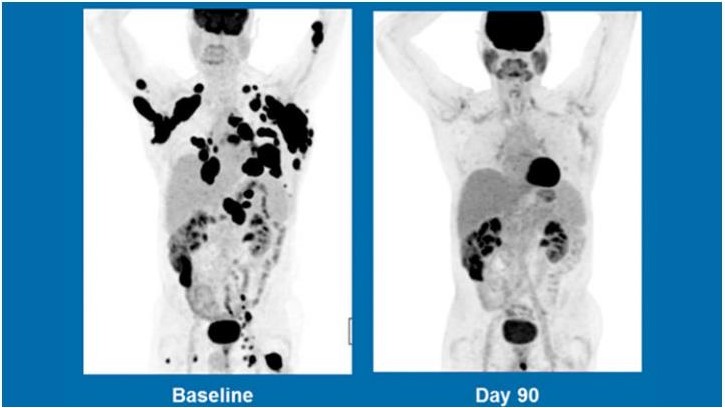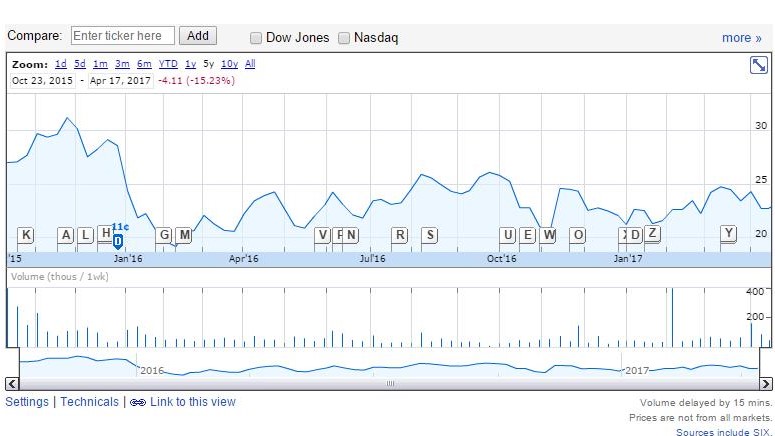Introduction
Immunotherapy has emerged as a new potential frontier in treating a variety of diseases. Immunotherapy has risen to national attention via being showcased on the front cover of Time magazine in 2016 (Figure 1). Now, immunotherapy has been thrust into the forefront as an emerging and exciting therapeutic area that has experienced massive growth in terms of potential pipeline candidates across all capitalization biotech companies. Immunotherapy ushers in a new class of potentially promising therapies by harnessing the body’s immune system to recognize and eradicate debilitating diseases, specifically cancer and chronic viral infections. This immunotherapy approach may inevitably result in a paradigm shift from traditional medical intervention. Immunotherapy possesses holistic attributes by harnessing the body’s immune system to contend with or in some cases prevent disease. In addition to the holistic aspects, immunotherapy has been shown to have a favorable side effect profile and best-in-class efficacy across many different disease states. These therapies may provide a powerful technology to contend with a host of diseases, and in a future state, may potentially serve as a preventative technology similar to a traditional vaccine. Immunotherapy has evolved into many different classifications with differing modalities over the past several years, which has given rise to a growing number mid and small-cap biotechnology companies with potential investment opportunities via an immunotherapy ETF. In late 2015,Loncar Cancer Immunotherapy launched the Loncar Cancer Immunotherapy ETF (NASDAQ:CNCR) and provided investors with an opportunity to invest in this unique cohort.

Figure 1 - TIME magazine cover showcasing immunotherapy and its potential in treating disease
Immunotherapy – The Brief Overview Of The Science
Immunotherapies engage and recruit the immune system to combat disease by inducing an antibody generation response against a specific antigen (foreign entity) typically present on the cell surface of a virus or cancer cell. This is very similar to a traditional vaccine approach seen for a whole host of diseases throughout history. These cell surface antigen targets typically evade the surveillance mechanisms of the immune system and thus persist and manifest disease within the host. As a result of the body’s inability to recognize and destroy these antigen targets via antibody generation and subsequent eradication, these antigens must be presented to the immune system exogenously. An option for the immune-tolerant host outside of traditional medical intervention is immunotherapy via exogenous delivery. Immunotherapies are directed at a specific antigen or cluster of antigens that compose the unique signature of a virus or cancer cell that is dissimilar to its host thus recognizing self from non-self.
There are many difference approaches in delivering these novel therapies utilizing various vectors as well as the body’s own white blood cells. Early immunotherapies such as Provenge™ extracted whole blood and enriched the blood for the white blood cells. These white blood cells were then incubated with an engineered fusion protein (one part antigen designed to a specific virus or cancer cell and one part growth factor). During the incubation, the white blood cells internalize and process the fusion protein resulting in active antigen-presenting cells. These active antigen-presenting cells are infused back into the patient to present the antigen of interest to the T-cells and B-cells thus enabling the generation of antibodies to recognize and destroy the disease of interest. Advances in the field of immunotherapy involve targeting multiple antigens, non-cell based delivery and utilizing a traditional vaccine approach with fusion proteins. Companies are exploring chimeric antigen receptors and high-affinity T-cell receptors to allow the recognition of cancer cells and viruses via a more direct manner.
Kite Pharma Propels Immunotherapy
The immunotherapy space has caught fire as of late due to ground-breaking oncology results from Kite Pharma (NASDAQ:KITE). Albeit it was a phase II, it’s a pivotal study thus these results can be used for approval in the US. Kite Pharma announced that 36% of very sick lymphoma patients had no sign of disease six months after a single treatment. Taken together, 82% of patients had their cancer shrink at least by 50% at some point in the study. The results from both three and six-month readouts suggest a one-time treatment provides a durable immune response for those who do respond well (Figure 2).
The CAR-T treatment involves enriching a patient's blood to obtain T-cells, inserting a gene that targets a specific cancer, and infusing these altered T-cells back into patients. Patients in the study had one of three types of non-Hodgkin lymphoma and had failed all other treatments. Median survival for such patients has been about six months. Six months after treatment, 41% still had a partial response (cancer shrunk at least in 50%) and 36% were in complete remission (no sign of disease). These results are remarkable considering these patients had failed all other prior treatments.
It’s noteworthy to point out that of the study participants, 13% developed a dangerous condition where the immune system overreacts in fighting cancer, but that rate is lower than in some other tests of CAR-T therapy. The rate fell during the study as doctors got better at detecting and treating it sooner. T-cell toxicity is a major concern as witnessed by Juno Therapeutics Inc. (NASDAQ:JUNO) which has had a CAR-T study put on hold twice after five patient deaths due to this problem. There were no cases of swelling and fluid in the brain in this or any other study testing Kite's treatment, company officials said.

Figure 2 - Body scans of a 62-year-old man with non-Hodgkin's lymphoma prior to treatment and three months after treatment with Kite Pharma's experimental CAR-T gene therapy, right. (American Society for Blood and Marrow Transplantation / Kite Pharma)
An immunotherapy Investment Case Study
Dendreon was the initial high-flying trailblazer in immunotherapy, however the company encountered many challenges after approval of its prostate cancer treatment, Provenge™ in 2010. Expectations were high; expansion was rapid, and the addressable market was largely unknown for this type of novel therapy. The adoption by physicians was not as rapid as initially thought despite its efficacy and favorable side effect profile. The stock shot as high as $54 a share and exceeded a market capitalization of $5 billion only to languish for the next four years and finally succumbing to bankruptcy and delisting from the Nasdaq. Valeant emerged as a suitor that showed the most interest in this product and Dendreon’s intellectual property and acquired the company via bankruptcy court proceedings for $495 million. Now Valeant has divested its Dendreon asset to a Chinese firm for roughly $1 billion in cash. Despite approval of the first immunotherapy, the single company investment risk in this emerging technology proved to be highly disappointing and leaving investors empty-handed. Diversifying throughout the immunotherapy cohort may provide the needed risk mitigation if considering the intrinsically risky group of largely clinical stage companies.
The Immunotherapy ETF and Performance
Loncar Investments has rolled out the first immunotherapy ETF and per Loncar Investments:
“The first cell-based immunotherapy, a cancer vaccine to treat prostate cancer, was approved in 2010. Today, many new classes of therapies, including checkpoint inhibitors, next generation vaccines, and chimeric antigen receptor (CAR) technologies, are being developed. It is the progress of these new therapies that the LCINDX aims to track.”
The FDA has already approved various immunotherapies thus the proof of concept and efficacy has already been well established along with favorable side effect profiles. The aggressive investment in research and development along with partnerships with big pharma in this nascent technology may result in potentially lucrative rewards for shareholders. Due to the high-risk and difficulty of identifying one company in hopes that a clinical stage immunotherapy drug candidate comes to fruition, an ETF offers exposure to the entire immunotherapy niche. This may serve as a viable alternative to those unwilling to take on a single company investment strategy while still taking on risk in this promising technology. Considering the long track record of innovative treatments coming out of the biotech cohort, an immunotherapy ETF may serve as a great companion holding for any long portfolio and long time horizon willing to take on significant risk within this niche biotechnology technology. The performance of this ETF since inception hasn’t done what of anything (returning -15%) however this could be long term play on this space (Figure 3).

Figure 3 – CNCR performance since inception, returning -15%
Summary
Immunotherapy ETF investing serves as a niche alternative to the traditional biotechnology ETFs via primarily clinical stage companies focusing specifically on immunotherapy research and commercialization. Immunotherapy investing may involve taking on more risk due to the nature of this technology being in its nascent stages and in the hands of largely clinical stage companies. Immunotherapy ETF investing may translate into superior performance if this technology continues to produce promising clinical read-outs and take hold throughout the sector. Immunotherapy via an ETF may serve as a great satellite holding for any long portfolio desiring exposure to the biotechnology sector with greater risk exposure with a long-term time horizon.
Noah Kiedrowski
INO.com Contributor - Biotech
Disclosure: The author has no business relationship with any companies mentioned in this article. He is not a professional financial advisor or tax professional. This article reflects his own opinions. This article is not intended to be a recommendation to buy or sell any stock or ETF mentioned. Kiedrowski is an individual investor who analyzes investment strategies and disseminates analyses. Kiedrowski encourages all investors to conduct their own research and due diligence prior to investing. Please feel free to comment and provide feedback, the author values all responses. The author is the founder of stockoptionsdad.com a venue created to share investing ideas and strategies with an emphasis on options trading.

